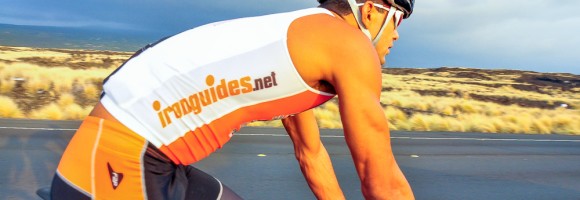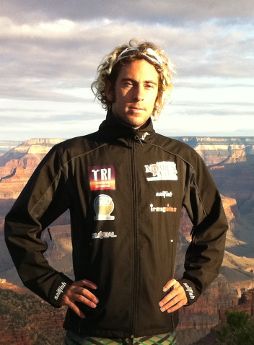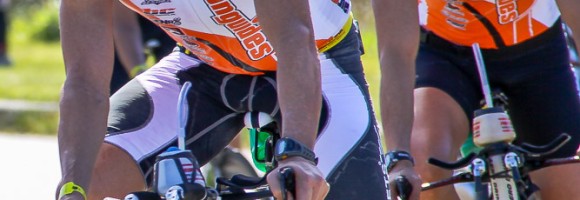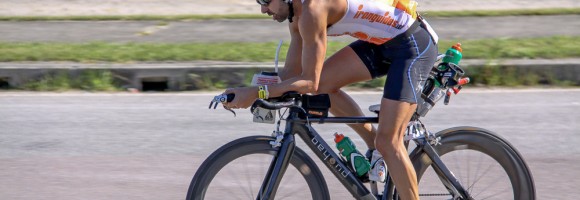Triathlon can be very rewarding and when things are going well with training and racing all seems perfect but when we are chasing ironman performance this is not always the case. Its very easy to get stuck in a negative situation with injuries or sickness effecting plans and compromising both performance and the enjoyment we used to experience from training.
We all experience this at times as sickness is inevitable but if your not careful its easy to go through a roll coaster of sickness after sickness and before you know it a whole season has passed by in this state.
Lets start by looking at why this happens and then we will look at how to get back to full health and start enjoying and progressing once more with your training.
Firstly ironman training for performance is very stressful on the body, the simple fact of training to improve performance means we have to stress our bodies in order to force the body to adapt to that stress and progress our fitness.
The big issue that most athletes face here is balancing stress, yes we have to stress the body in order to improve but the level of stress required to bring about adaption is a lot less than most athletes think. Not only is the level of stress required less than we think but if we put our bodies under too much stress then adaption simply stops as the body cannot keep up/ adapt fast enough.
This state of being overstressed with too much training is where most athletes are, they train very hard yet see very little if any change in performance over time. Now factor into this that lifestyle stresses also play a role here. When i say lifestyle stresses i am talking about how much sleep we get, how demanding our job may be, hours spent driving or commuting for school or work, household chores and dietary stresses are all major influences on our stress levels. The body does not differentiate between training stress and lifestyle stress, so if you are overloaded with lifestyle stress and try to increase training stress then things are not going to work out well.
What happens when we do this is our bodies start to break down, our immune system is one of the first to suffer, our body is trying so hard to adapt to the stresses of training and life that our immune systems not longer have the resources available to fight off basic infections. We simply end up picking up infection after infection that normally our bodies would fight off with ease.
If this sounds familiar to you then its time to take action and make some changes. Stop looking at vitamin bottles and recovery drinks and assuming these are going to be the solution, that your simply lacking something in the diet, this is very unlikely to be the case and will not prevent this pattern of repeated infections.
Firstly we have to look at all the stresses going on and figure out which ones we can reduce in order to get our health back on track. If you work 8 hours a day with a 1 hour commute this is not generally something you can change whereas a 30min commute and 30minutes in the supermarket twice a week is something you could change by trying online shopping. If you use a gym twice a week that requires a 30min commute for strength training then maybe investing in some basic strength equipment at home would free up even more time and reduce stress.
We also have to look at training volume and intensity, this is the one area an athlete will look at last and find it hardest to change. If you generally train 10 hours a week maybe you need to reduce this to 6-8 hours a week and see if you experience better health and improved performance. I have seen time and time again with athletes that amazing performances can come from very little volume and its quite simply a result of everything being in balance and just ensuring that the body is receiving adequate stress from the training in order to force adaption.
Learning to go easy and really hard are also a lesson many athletes need to learn, so many train almost always at a moderate intensity that is very stressful on the body. For example the long run is a foundation to almost every training plan, this should be a very easy run, heart rate low and you should be able to maintain the effort for hours, you should not be finishing your long run if its 90min long feeling like your done in, you should be finishing feeling fresh and full of energy! On the other side of the equation you need to go very very hard for short periods, this is how our bodies are built, we adapt very quickly to this kind of stress so long as the intensity is short enough and hard enough, the issue most athletes have is they are so tired from going too hard on their easy workouts that when they try to go hard they are really not much above their moderate pace and so no real stimulus to adaption is going to take place.
So how do we make changes to stop this pattern reoccurring and wasting another year. Firstly you have to accept that a change is needed, and you need to accept that it is going to take some time, i like to set aside 8-12 weeks for this initial change before reevaluating.
With training we need to look at the most important sessions for health as a starter, that means we need very very easy aerobic sessions and some very very hard short duration interval sessions. What we need to take away from our training programs is all the moderate effort and long duration hard interval sessions as these are too stressful on our bodies while we are trying to recover optimal health.
Lets set 1 long run and 1 long ride per week into the schedule, on these sessions you need to keep intensity low, using a heart rate monitor would be wise here and keep volume to 90min run and 2hr30 bike – for the bike heart rate below 120 and for the run below 130 – if you need to walk to do this especially on any hills you may encounter then thats what you need to do.
Add into this program 2 short duration high intensity sessions, these are safely done on the bike or in the pool to avoid possible injury. For these to be effective the duration of interval needs to be between 30 and 45 seconds and the intensity is all out with long recovery between efforts, for example
6x40s all out effort with 3minutes very easy active recovery between
Keep the warm up and down relatively short for this session, the stimulus is coming from the all out efforts not the duration of the session, a session like this should typically take 40-60minutes no longer.
This basic program will already give you 6 hours of training in the week and add in a couple of additional easy sessions and your at the volume you should be sticking at for the 8-12 week recovery period.
So looking at your week you may now have a plan as follows
MON – ALL OUT INTERVALS IN POOL – 60min
TUE – ADDITIONAL EASY BIKE – 40min easy
WED – EASY ENDURANCE RUN – 90min
THUR – ALL OUT INTERVALS ON BIKE – 60min
FRI –
SAT – ADDITIONAL EASY RUN – 40-60min
SUN – EASY ENDURANCE BIKE – 2.5 hours
This plan may look very basic and volume low but there is plenty of training here to create stimulus and the lack off volume will allow you to push much harder on your all out intervals to help deliver the desired adaptions!
Be patient and ride out this program for the duration, do not be tempted to increase volume or intensity duration even if your feeling great and refreshed, that feeling is the desired effect and if your feeling this way then the plan is working – if you straight away increase then you will go straight back to where you were and start once more on your roller coaster of sickness.
Enjoy your training
–
Train with ironguides!
Personalized Online Coaching: Starting at USD190/month
Monthly Training plans (for all levels, or focused on one discipline): Only USD39/months
Event based training plans:
Sprint Distance (USD45 for 8-week plan)
Olympic Distance (USD65 for 12 week plan)
Half Ironman (R$95 for 16-week plan)
Ironman (USD145 for 20-week plan)
X-Terra (USD65 for 12-week plan)
Running Plans (10k, 21k and 42k – starting at USD40)







Recent Comments